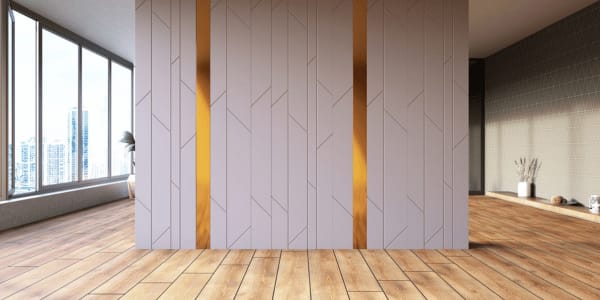Unraveling the Different Types of Wallpaper For Every Style and Budget
Wallpaper is back big time! Today’s wallpaper comes in various forms, and the choices are endless. Whatever your style—dark and dramatic, light and airy, playful and fun—wallpaper sets the mood and transforms the feel of any room in an instant. Read on to get wallpaper ideas and find out what five different types of wallpaper can do for your home.
Five Different Types of Wallpaper for Home Décor
If you’re a fan of wallpaper, you’re likely well-versed in one of these wallpaper styles. Here are the five most common types of wallpaper for home décor.
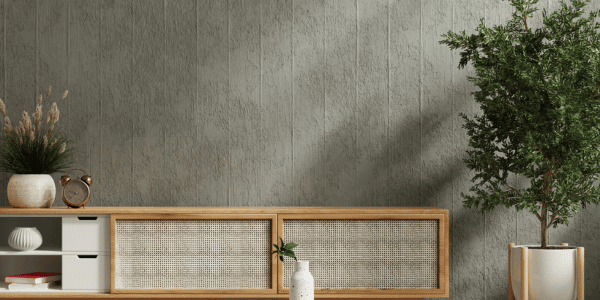
1. Textured Wallpaper
Generating interest and adding depth, textured wallpaper promotes a relaxed, warm, and comfortable atmosphere. The most common textured wallpaper options include:
- Grasscloth. Perfect for the bedroom or a nursery, grasscloth emulates natural fibers and adds an earthy touch.
- Embossed. With flair and elegance, embossed wallpaper gives a dimension of refinement. Consider it for an entryway or bathroom.
- Leather. Soft and grounded, leather suggests focus and concentration. It’s best suited for a library or study.
Textured wallpaper is in! Check out more design trends here.
2. Metallic Wallpaper
Metallics offer a shiny and vibrant mirrored effect that easily integrates into glamourous, avant-garde, or Victorian designs. Due to its reflective nature, metallic wallpaper is ideal for areas with a lot of natural light, as it can reflect that light throughout an entire room. Implying sophistication, a metallic wall might be the statement piece you need in a modestly decorated space.
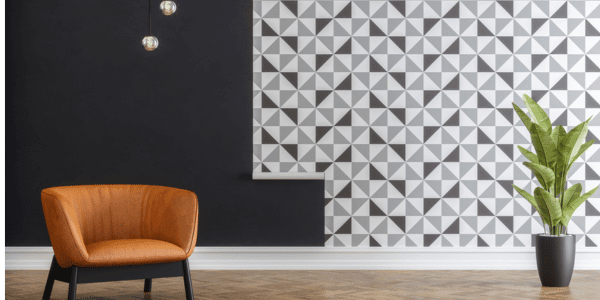
3. Patterned Wallpaper
Whether it’s floral, geometric, damask, dotted, or plaid, patterns have taken over the wallpaper industry. While the colors of a stylish wallpaper pattern can change the mood of a room, the size can do much more. A small-scale pattern might make a room look spacious, whereas a large-scale one can make a room cozy. Still, keep in mind that too much pattern can be, well, too much. Choose yours wisely, coordinate it with your furniture appropriately, and use it thoughtfully.
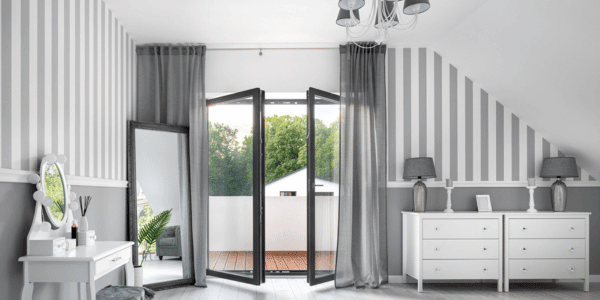
4. Striped Wallpaper
Lines are great when you want to create an optical illusion. Have a low ceiling? Vertical stripes can make it appear higher. Have a narrow space? Horizontal stripes can make it feel wider. You’ll also want to think about the weight of the line, as thick lines can indicate dignity, while thin lines might communicate formality.
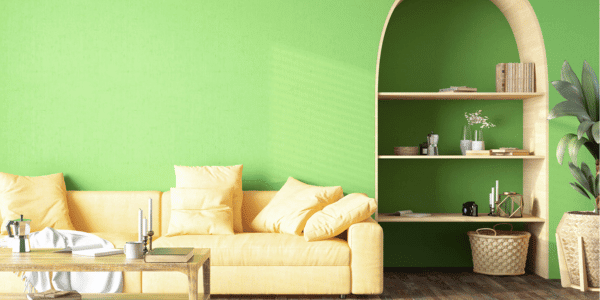
5. Solid Wallpaper
Solid-colored wallpaper has the precision and structure that usually outperforms a DIY paint job. To find a solid-colored wallpaper that fits your look, choose:
- Soft, cool colors for a tranquil setting.
- Intense, bright colors for a dramatic vibe.
- Warm colors for a comfortable feel.
Installing wallpaper is a wallet-friendly way to amp up your space. Read “How to Make the Most of Your Home Décor Budget” to learn more.
How to Install Wallpaper: Types of Wallpaper Application
Wallpaper can be applied to a wall in various ways. Wallpaper comes with either sticky paste already applied, no paste, or peel-and-stick adhesive.
- Pasted wallpaper. This wallpaper is backed by paste that turns sticky when soaked in water. While it can be easy to work with, the water-soaking process can be messy and cumbersome.
- Unpasted wallpaper. Some wallpapers come without a pasted back. Instead, you apply the paste straight to the wall and quickly glue the wallpaper that way. Leave this method to the pros.
- Peel-and-stick wallpaper. Self-adhesive wallpaper includes a sticky back. Just peel off the protective covering and stick it to the wall. Although quick and foolproof, peel and stick wallpaper can sometimes leave behind a sticky residue.
Some adhesives are more permanent than others, and it’s just as important to take into account how easy it is to remove different types of wallpaper before moving forward.
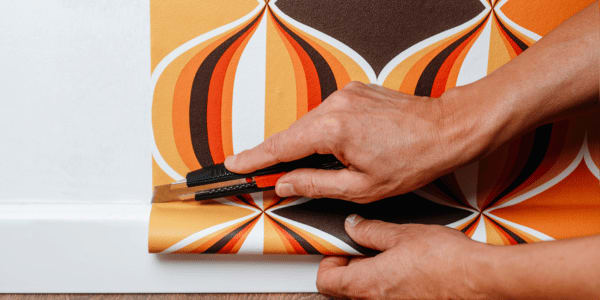
Wallpaper Ideas
To make wallpapering a breeze, consider these helpful wallpaper ideas:
- Know what you’re getting yourself into. Understand how to prep your walls, install the wallpaper, and maintain it afterward.
- Get a professional. From measuring your wall to gluing on the wallpaper, a pro might save you from costly mistakes.
- Buy more than you think you’ll need. Prints and patterns are tricky to align; the more wallpaper you have, the more you’ll have to work with.
- Order samples before committing. The colors and textures you see online don’t always match what you get in real life.
- Think long-term or temporary before purchasing. Most wallpapers are glued to a wall with a more permanent adhesive, so confirm you’ll be happy with it for the long run.
Should You Hire a Pro to Install Wallpaper?
While you can’t help falling in love with a certain type of wallpaper, installing wallpaper might be better left to the pros. To help you gauge your handiness, read “When to DIY vs. When to Hire a Pro.” In it, we walk you through six valuable tips for DIY-ing.
Wallpaper FAQs
What is the most popular type of wallpaper?
Vinyl wallpaper might be the most popular type of wallpaper. It’s easy to clean and super durable. Available in solid, patterned, and textured varieties, vinyl wallpaper can be installed by a peel-and-stick method or with a more permanent adhesive, depending on the product.
How many types of wallpaper are there?
In terms of design, there are five main types of wallpaper. The five main types of wallpaper include: 1. Textured wallpaper, 2. Metallic wallpaper, 3. Patterned wallpaper, 4. Striped wallpaper, and 5. Solid wallpaper.
What is the easiest type of wallpaper to hang?
The easiest type of wallpaper to hang is peel-and-stick wallpaper. Working like a giant sticker, you simply peel off its adhesive-protected layer and stick the wallpaper on the wall. Removable and reusable, the temporary nature of peel-and-stick wallpaper makes it a top choice for renters and DIYers.
What wallpaper is trending right now?
Right now, textured wallpapers are trending. Whether placed on a single wall or installed throughout an entire room, textured wallpaper can evoke feelings of calmness, happiness, and excitement. Some textured wallpaper examples include grasscloth, sisal, bamboo, flock, and embossed wallpapers.
